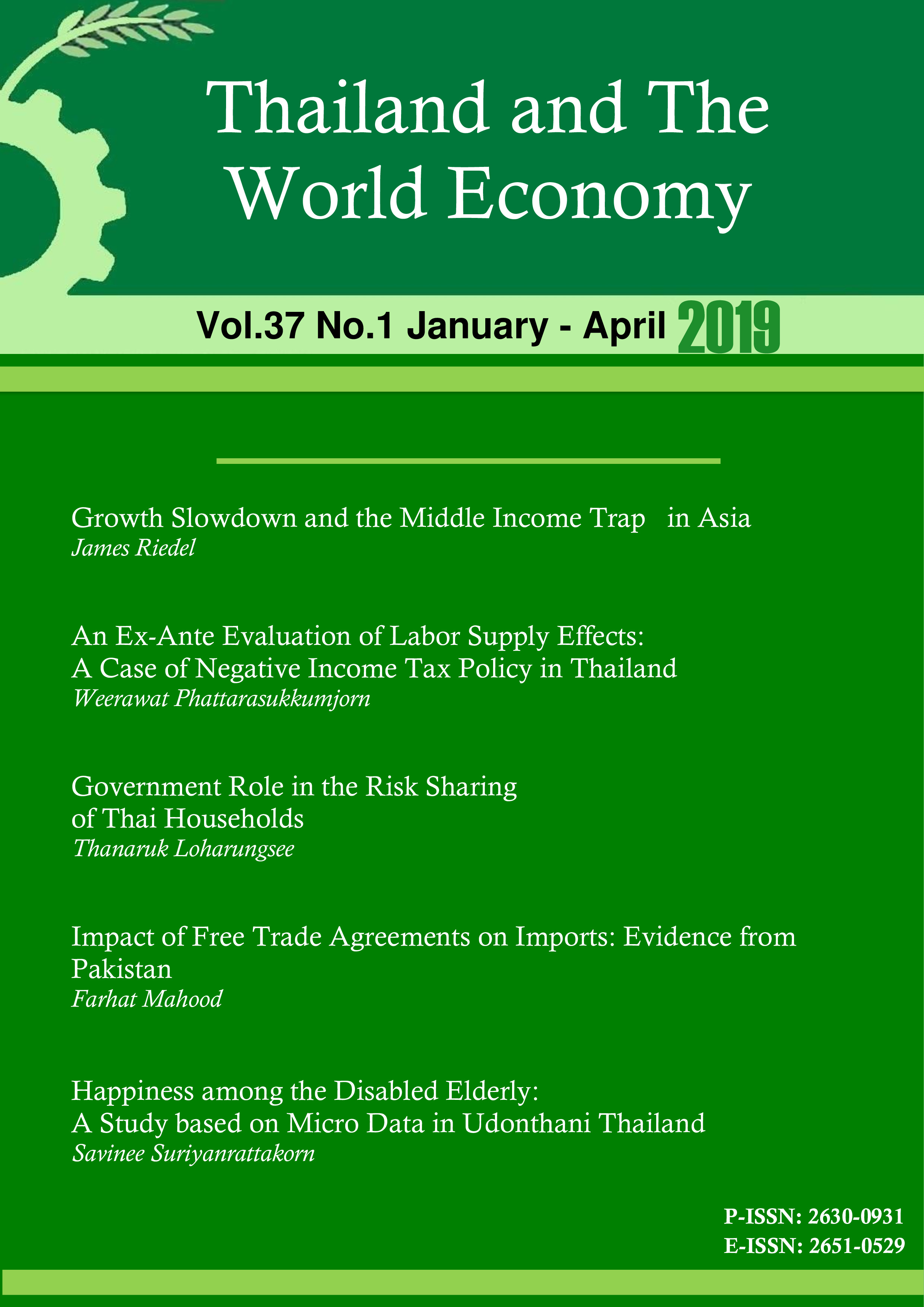Growth Slowdown and the Middle Income Trap in Asia
Keywords:
Middle-income trap, Economic growth, AsiaAbstract
Many Asian developing countries are alleged to be stuck in a “middle-income trap.” A middle-income trap is associated with the slowing down of growth due to policy rather than the natural and inevitable consequence of catching-up with high-income countries. If growth slowdown is due to policy, does it mean ipso facto that a country is “trapped?” The answer is no, unless the policy maker has a vested interest in growth-inhibiting policies. Why should that be a particular problem for middle-income countries? The paper provides answer and some circumstantial evidence to support it.
References
Acemoglu, D., & Robinson, J. (2012). Why nations fail: The origins of power, prosperity, and poverty (1st ed.). New York: Crown.
Acemoglu, D., & Robinson, J. (2006). Economic backwardness in political perspective. The American Political Science Review, 100(1), 115-131.
Athukorala, P., & Yamashita, N. (2006). Production fragmentation and trade integration: East Asia in a global context. North American Journal of Economics and Finance, 17 (3), 233-256.
Athukorala, P., & Menon, J. (1999), Outward orientation and economic development in Malaysia. The World Economy, 22 (8), 1119-1139.
Cadot, O., Carrère, C., & Strauss-Kahn, V. (2011). Export diversification: What's behind the hump? The Review of Economics and Statistics, 93(2), 590-605.
Eichengreen, B., Park, D., & Shin, K. (2011). When fast growing economies slow down: International evidence and implications for China. NBER Working Paper No.16919, National Bureau of Economic Research.
Flaaen, A., Ejaz, G., & Saurabh, M. (2013). How to avoid the middle-income trap: Evidence from Malaysia. World Bank Policy Research Working Paper No.6427, World Bank.
Hill, H., & Athukorala, P. (1998). Foreign investment in East Asia: A survey. Asian-Pacific Economic Literature, 12(2), 23-50.
Hill, H. (2010). Malaysian economic development: Looking backwards and forward. ANU Working Paper No. 2010/13, Australian National University.
Imbs, J., & Wacziarg, R. (2003). Stages of diversification. American Economic Review, 93(1), 63-86.
Klinger, B., & Lederman, D. (2006). Diversification, innovation, and imitation inside the global technology frontier. World Bank Policy Research Working Paper No.3872, World Bank
Krueger, A. (1974). The political economy of the rent-seeking society. American Economic Review, 64(3), 291-303.
Lucas, R. (2009). Trade and the diffusion of the industrial revolution. American Economic Journal. Macroeconomics, 1(1), 1-25.
Pham, T., & James R., 2013. An ccam’s razor approach to analyzing comparative Advantage Dynamics. unpublished manuscript.
Rodrik, Dani (2004). Industrial policy for the twenty-first century. KSG Working Paper No. RWP04-047, Harvard University.
Sirotori, M., Bolormaa, T., & Olivier C. (2010). Revealed factor intensities at the product level. Policy Issues in International Trade and Commodities Study Series, UNCTAD No. 44, United Nations Conference on Trade and Development
Solow, R. (1956). A contribution to the theory of economic growth. The Quarterly Journal of Economics, 70(1), 65-94.
Ventura, J. (1997). Growth and interdependence. Quarterly Journal of Economics, 112(1), 57–84
Warr, P. (2012). A nation caught in the middle-income trap. East Asia Forum Quarterly (October-December), 4-6.
Woo, W. (2009). Getting Malaysia out of the middle-income trap. unpublished manuscript, University of California, Davis, August 2009.
World Bank East Asia and Pacific Economic Update. (2010), Robust recovery, rising risks, Volume 2, Chapter 3: Escaping the middle-income trap. November 2010.










